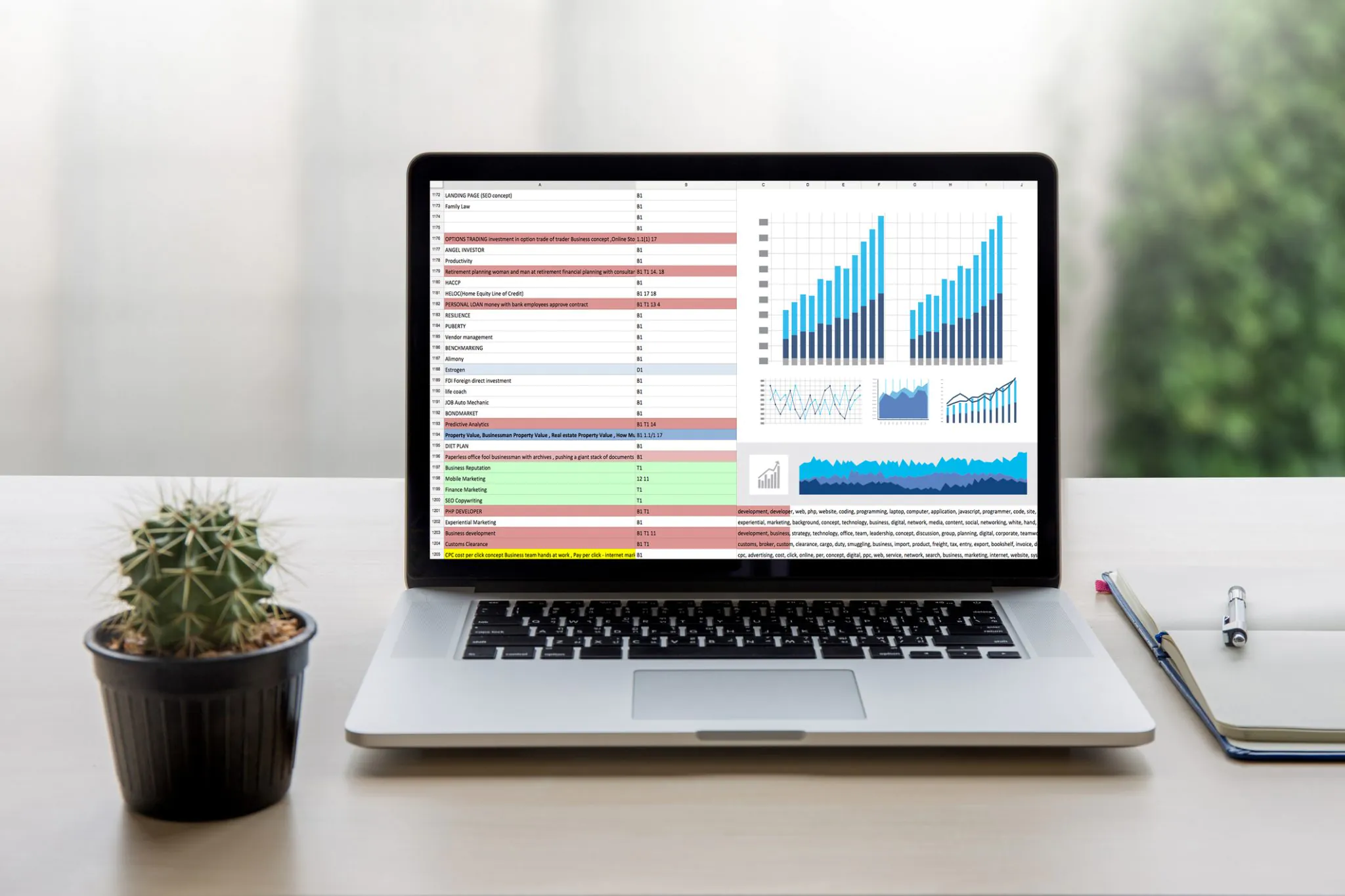Learn More
-
The State of the Best Supply Chain Management Tools and Techniques in 2022
-
Benefits of Using Supply Chain Management Tools in 2022
-
Top 15 Supply Chain Management Tools Used By Large Organizations in 2022
-
10 Types of Supply Chain Models Explained
-
7 Types of Supply Chain Management Models
-
The Future of the Best Supply Chain Management Tools
The State of the Best Supply Chain Management Tools and Techniques in 2022
There are many supply chain management tools, each with its strengths and weaknesses. This article will take you through the top supply chain management tools and techniques currently being used by large organizations in 2022, that have already been through the wringer and found what works. Readers will be able to decide which tool is best for them and their company in just a few short minutes with this definitive guide.
What is a supply chain?
The supply chain is one of the most important aspects of the business. If a company cannot produce high-quality products and distribute them to its target audience quickly, it will not be able to generate the profit they need to sustain itself. Fortunately, several different tools can increase an organization’s efficiency and accuracy.
Streamline your supply chain management process with BizVibe. Trusted by millions of companies.
Benefits of Using Supply Chain Management Tools in 2022
Supplier management is the process of sourcing and selecting suppliers and building relationships with them. The benefits of using supply chain management tools are:
- Cost savings: Using a supplier management tool enables you to create a single point of contact for all your suppliers, which helps reduce costs as well as time spent on managing your supply network.
- Increased transparency: With a supplier management tool in place, you can track the progress of your order from start to finish. This enables greater visibility into the state of your inventory and allows you to make informed decisions about your supply chain.
- Improved communication: A supplier management tool helps streamline communication between you and your suppliers by providing an online platform where both parties can exchange information easily and efficiently.
- Better ROI: Using a supplier management tool means that you can save money by reducing time spent sourcing new suppliers as well as time lost due to errors in communication or miscommunication between parties
- Better Monitoring: As the volume and complexity of supply chains increase, companies are struggling to find ways to ensure compliance. Supply chain monitoring tools can help you with this.
Top 15 Supply Chain Management Tools Used By Large Organizations in 2022
Supply chain management tools can help you manage your inventory, customer service, and more.
Supply chain management software is used by large companies to optimize their supply chain processes. These tools were originally developed for manufacturing firms but have expanded into other industries as well. With the help of these tools, businesses can reduce costs and increase efficiency.
Supplier management tools and techniques are often used in conjunction with other business software solutions such as ERP (enterprise resource planning) software and CRM (customer relationship management) software. These solutions work together to provide a complete picture of your business operations and give you valuable insights into customer behavior and trends.
The supply chain management tools are divided into two categories:
- Operational Supply Chain Management Tools: are used to manage operations within an organization. These include Order Management, Product Sourcing & Procurement, Transportation Management, Inventory Management, and Demand Forecasting & Replenishment.
- Strategic Supply Chain Management Tools: are used for strategic planning and analysis of supply chains. These include Business Intelligence (BI) Tools, Integrated Planning Systems (IPS), Advanced Planning Systems (APS), Optimization Software Solutions, and Simulation Software Solutions.
Here are the top 15 supply chain management tools used by large organizations in 2022:
1. Request For Proposal Software (RFP)
An RFP is an invitation to vendors or suppliers to submit proposals for specific goods or services your company needs. An RFP can be issued formally or informally, depending on your needs and budget constraints. Some companies use cloud-based RFP services like BidSync that allow them to manage their entire RFP process online from start to finish with no need for manual intervention by anyone within the organization except perhaps an IT person who has been trained on how.
2. Shipping Status Alerts and Updates
This solution is a powerful tool for ensuring that your packages arrive on time. By providing you with key information about your shipments, this solution can help you to better manage your supply chain.
The benefits of this solution include:
- Shippers can receive alerts when shipments are delayed or received late.
- Companies can receive notifications when their packages have been damaged in transit. This enables them to address the issue and make sure their customers are satisfied with the products they receive.
- Shipping Status Alerts and Updates are an excellent tool for companies who want to ensure that their shipments arrive on time and in good condition.
3. Warehouse Management Systems
Warehouse management systems (WMS) track product movement, inventory levels, and other warehouse operations, including receiving, shipping, storing, and picking. WMS provides valuable data that helps companies optimize their supply chains and keep costs low.
4. Transportation Management Systems (TMS)
Transportation management systems allow companies to manage their shipments using multiple carriers including freight forwarders, railroads, airlines, and trucking companies. A TMS can combine all transportation modes into one platform so that companies don’t have to manually coordinate each step of their shipments across multiple carriers or suppliers independently.
5. Order Management
The Order Management tool is used for placing orders for the purchase of goods and services. It allows companies to streamline their purchase order process by automating and simplifying the process. The tool also enables users to track the status of each order in real time and access historical data related to the order.
6. Product Sourcing and Procurement
Product sourcing refers to identifying potential vendors or suppliers for a given product or service. The procurement process involves negotiating pricing, delivery, quality, and other terms before agreeing with any vendor or supplier. This is one of the most critical tasks in Supply Chain Management because it involves making decisions that can impact your bottom line significantly if done wrong.
7. Inventory Management
Inventory management is one of the most important and basic functions in supply chain management. It helps businesses to track their inventory levels, monitor inventory replenishment, and avoid stock-outs. With the help of inventory management software, organizations can easily manage their inventory levels in a much more efficient way.
8. Shipping Management
Shipping management tools are used by large organizations to streamline and automate their shipping operations. These tools help organizations track all shipments and manage their delivery schedules with ease. In addition to that, these tools also allow users to create and print labels for various products, which further reduces the manual efforts involved in the shipping process.
9. Order Fulfillment
Order fulfillment refers to the process where orders are processed from order entry until delivery is made to customers’ doorsteps. Order fulfillment tools are used by large organizations as they help them to automate this process with ease. Such tools allow users to create a better customer experience while improving efficiency at the same time.
10. Demand Forecasting and Replenishment
Demand forecasting is the art of predicting future demand based on historical data. Demand forecasting helps companies plan so they don’t run out of products or have excess inventory sitting around. Demand forecasting allows companies to determine how much product will be needed for each month or quarter so they can replenish when necessary.
11. Supply Chain Visibility
Supply chain visibility refers to having access to real-time information about where goods are located within your supply chain network. This includes knowing where goods are coming from, where they’re going next, and if anything goes wrong along the way (e.g., an unexpected delay). Supply chain visibility provides valuable insight into how quickly goods move through your network
12. B2B eCommerce
This tool allows businesses to sell products directly to other businesses rather than consumers. It usually involves selling through an online marketplace such as Amazon or eBay but may also involve direct sales by phone or email if there aren’t any intermediary sites involved. B2B eCommerce is often used by manufacturers who have excess inventory that they need to move quickly but don’t want to sell at a discount price through traditional retail channels like Walmart or Target.
13. Lean Inventory
Lean inventory is a method that helps companies manage their inventory more efficiently and cost-effectively. The basic idea behind lean inventory is that you have to buy only what you need when you need it. This means that you don’t stock up on products or supplies at the beginning of the month or quarter and keep them in your warehouse until the end of the period. Instead, you only buy enough products to fill orders so that no excess inventory items are sitting around. When you do have excess inventory, it’s difficult to get rid of it because there aren’t any buyers interested in buying it from you at a discount price.
14. Specialized Freight Handling
Freight management is a big part of the supply chain. From managing warehouse space to making sure products are delivered on time, it’s a critical component that can make or break your business.
15. Bid and Spend
Bid and spend is a free web-based tool that helps companies manage their procurement process. It allows you to create an online marketplace for suppliers and lets them submit bids for your projects. Users can review these bids and choose the best one based on pricing and quality criteria. Bid and spend tools are supply chain monitoring tools that allow you to monitor spending levels and analyze budgets over time so you can predict future expenses with greater accuracy.
Streamline your supply chain management process with BizVibe. Trusted by millions of companies.
10 Types of Supply Chain Models Explained
Supply chain management is a complex process. It requires organizations to manage their suppliers, their products and services, their customers, and their internal processes to meet customer needs. All of these components are interconnected with one another, so they must work together as efficiently as possible.
The way that an organization manages its supply chain depends on the type of model it uses. Several different types of models can be used in supply chain management, including:
1. Tiered models
In tiered models, there are two or more tiers in the supply chain. The most common example of this is a manufacturer who sells directly to consumers or retailers versus selling to other manufacturers who then sell to consumers or retailers. The manufacturing company may also have several different tiers within its organization — for example, if it has multiple factories located around the world that all make different products for sale in different markets.
2. Chain-of-command
Chain-of-command models have authority flowing from top to bottom throughout an organization’s supply chain. This means that decisions about pricing, product design, and other factors are made at the top and then filtered down through each level of the organization until they reach employees at the bottom.
3. Continuous Replenishment
In this model, products are replenished continuously as they are sold. This approach works well for high-volume items with low inventory costs and low service levels, such as fast food restaurants or gas stations. It’s also useful when there’s no need for forecasting demand because demand is relatively predictable and there is little variation in order size.
4. Build-to-Order
This model involves building products only after customers place an order through direct sales or an indirect channel such as retail stores or eCommerce websites. Build-to-order is best for products with high setup costs and long lead times, such as airplanes or cars. It can also be used for custom products like jewelry or furniture where it may be beneficial to delay production until just before shipping so that manufacturers have time to incorporate customer requests into their designs. However, it’s important to note that build-to-order can increase lead times.
5. Channel Assembly
In a channel assembly model, retailers buy directly from manufacturers and then sell their products to end customers. This is often how most B2C businesses operate. For example, Wal-Mart buys products directly from manufacturers and then sells those products to consumers.
6. Integrated Make-To-Stock
Integrated make-to-stock is a type of supply chain model where companies manufacture products for sale based on forecasted demand rather than actual sales demand. This model is used by many companies because it allows them to have more flexibility in production to meet changing customer needs. For example, if there was an unexpected spike in demand for a particular item but there was not enough inventory on hand to satisfy that demand, an integrated make-to-stock system would allow the company to quickly produce more units of that item so that customers can receive it as soon as possible.
7. Fast chain
Fast chains are designed to reduce the time it takes for a product to move from the factory to the customer. This is achieved by reducing inventory and just-in-time manufacturing practices. Fast chains have a high level of flexibility, which allows them to respond quickly to changes in demand and production schedules.
8. Agile
Agile supply chains are focused on lean manufacturing and efficient processes that allow companies to react quickly to changes in market conditions or demand levels. Agile supply chains allow companies to respond quickly with new products or services that meet customer needs better than their competitors’ offerings do.
9. Custom-configured
Custom-configured supply chains involve customization at every stage of production so that each product meets specific customer requirements exactly as they were ordered and requested by customers. Custom-configured manufacturing processes allow companies to create products that suit individual needs without having to stock large amounts of inventory or carry over products from one season or year into another.
10. Flexible Supply Chains
Flexible supply chains allow companies to respond quickly to changes in demand or sales volumes by adjusting production levels and capacity utilization. Flexibility is achieved through the use of outsourcing, outsourcing, and just-in-time practices that ensure that raw materials, components, and finished goods are manufactured or purchased only when needed.
7 Types of Supply Chain Management Models
Supply chain management is a process that is concerned with the management of a product from beginning to end. It is important to note that supply chain management involves more than just logistics and transportation. It also includes the procurement, production, and delivery of products to customers.
Supply chain management models are used to illustrate how different companies should operate their supply chains to be successful. There are many different types of supply chain management models such as:
1. Push–Pull Model
In this model, suppliers push products toward retailers and customers to pull them back by placing orders for those products.
2. One Source – Multiple Sources Model
In this model, there is only one source of supply for all products which means that every company looks to one supplier for all their requirements.
3. Directed Distribution Model
This model uses direct distribution where the supplier delivers directly to their customers (end users).
4. Direct Store Delivery Model
This model involves delivering goods directly from wholesalers or manufacturers to retail stores for sale or use by consumers or other businesses, rather than delivering them through other intermediaries such as retailers or distributors.
5. Distribution Center Warehouse Model
This is one of the most widely used models out there. It involves storing and distributing products from a single location. The DC Warehouse model is great for companies that have limited product lines and only need a few warehouses to store their products.
6. Just-In-Time (JIT) Model
This model is used by companies that want their inventory levels to be as low as possible while still maintaining customer service levels. JIT focuses on making sure that everything is shipped just before it’s needed, which means there isn’t much waste or extra cost involved with this model.
7. Order Fulfillment Model
This is a variation of the Distribution Center Warehouse Model where orders are fulfilled from multiple locations instead of just one location. This allows companies to meet customer needs more quickly without having to pay for extra storage space at distribution centers all over the country or the world.
The Future of the Best Supply Chain Management Tools
The demand for better inventory management and supply chains is on the rise. Big business owners know they cannot afford to underestimate the value of a good tracking system. Luckily, there are tools available that make the job easier than it has ever been before. For large organizations, these tools will be worth the investment. Tools are a very important part of the process because they can help automate or oversee tasks within the supply chain and sourcing. The above-mentioned tools are the top 15 supply chain management tools for large companies for the next 5 years.
BizVibe is a leading supply chain monitoring tool and solutions provider trusted by millions of companies. We help our customers stay competitive, increase their efficiency and make the best use of their available resources. Try BizVibe for Free today.



